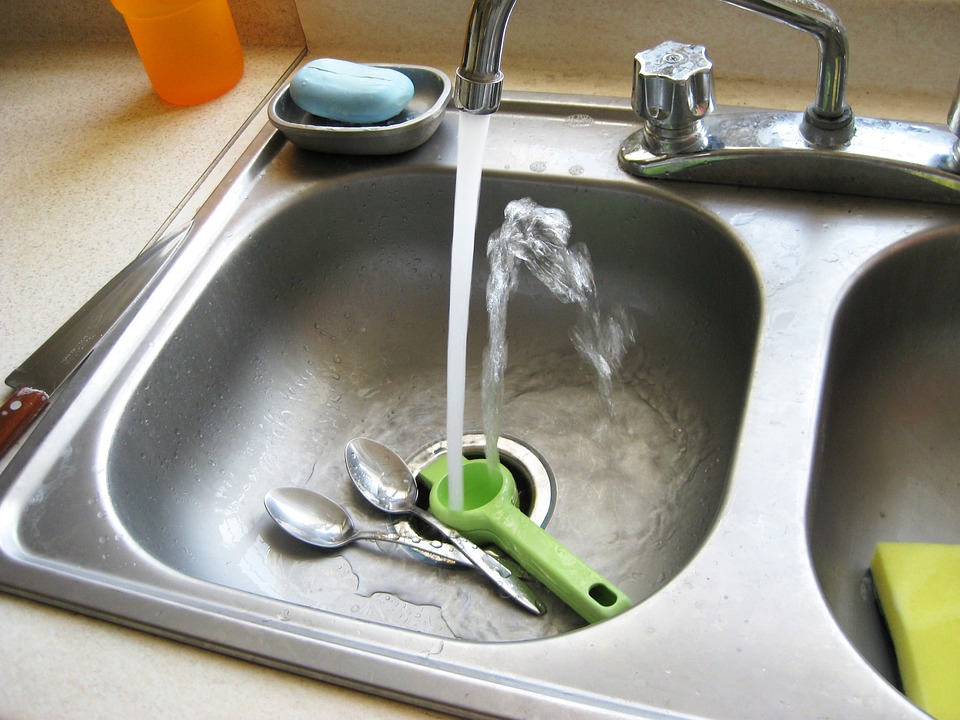Are you tired of watching precious gallons of water go down the drain every time you use your kitchen sink? Looking to reduce your water usage and lower your utility bills? In this post, we’ve got you covered with practical and effective water conservation techniques for the kitchen sink. From simple everyday habits to easy-to-install devices, we’ll explore a range of strategies that can help you minimize water wastage without compromising on convenience or hygiene. Whether you’re a sustainability enthusiast or simply want to make a positive impact on the environment, these tips will empower you to be more mindful of your water consumption in the heart of your home.
Key Takeaways
- Implement practical water-saving techniques such as fixing leaks, using aerators, and installing a low-flow faucet to reduce water wastage in the kitchen.
- Engage the family in water conservation efforts by educating them about the importance of saving water and encouraging mindful usage habits.
- Stay updated on advancements in sink technology and kitchen plumbing to make informed decisions about upgrading to more water-efficient fixtures.
- Adopt efficient dishwashing strategies like scraping plates instead of pre-rinsing and running full dishwasher loads to minimize water consumption.
- Practice water-smart cooking habits such as using minimal water for cooking, reusing pasta cooking water, and defrosting food in the refrigerator to save water.
- Commit to long-term water conservation by consistently monitoring and maintaining the kitchen plumbing system to prevent water leaks and reduce unnecessary usage.
Understanding Water Conservation
Importance in the Kitchen
Water conservation techniques for the kitchen sink are crucial due to water’s essential role in cooking, cleaning, and food preparation. Conserving water in the kitchen is not only about reducing utility bills but also about minimizing our environmental impact. For instance, by fixing leaky faucets or using a low-flow aerator, we can significantly reduce water wastage and save money on monthly bills.
Moreover, efficient use of water in the kitchen supports sustainable living practices. By adopting simple habits such as turning off the tap while washing dishes or using a basin to collect rinse water, we contribute to conserving this precious resource. These small changes in water use can add up to significant savings over time.
Extending Beyond Kitchen
Conserving water at the kitchen sink goes beyond just saving resources within that space; it can inspire similar behaviors throughout the home. When individuals adopt water-saving techniques in their kitchens, they become more mindful of their overall household sustainability efforts. This mindfulness often extends to other areas like laundry rooms and bathrooms.
Practical Water-Saving Techniques
Efficient Dishwashing
There are many ways to conserve water in the kitchen. Instead of pre-rinsing dishes, simply scrape off excess food before loading them into the dishwasher. This small change can save gallons of water per load. Using a dishwasher with an energy-efficient setting helps minimize water usage by only using the necessary amount for each cycle. For those who prefer hand washing, filling a basin with soapy water and rinsing dishes in batches conserves resources compared to leaving the tap running continuously.
Another efficient method is to consider reusing cooking water for other purposes such as watering plants or cleaning. By doing so, you can maximize resource efficiency and reduce overall waste.
Cooking Conservation
When preparing meals, it’s essential to be mindful of cooking conservation techniques that help save water. For instance, when boiling or steaming vegetables, use minimal amounts of water to preserve nutrients and prevent unnecessary waste. Opting for one-pot meals not only minimizes cleanup but also reduces overall water usage during cooking and dishwashing.
Moreover, reusing cooking water for soups or sauces is another practical way to conserve resources in the kitchen sink area while minimizing wastage.
Advancements in Sink Technology
Low-Flow Faucets
Low-flow faucets are an essential part of water conservation techniques for the kitchen sink. These innovative faucets are designed to reduce water consumption without compromising functionality. By incorporating low-flow aerators, these faucets mix air into the water stream, maintaining pressure while conserving water. As a result, upgrading to low-flow faucets can significantly decrease water wastage at the kitchen sink.
For instance, when you turn on a traditional faucet, it releases a certain amount of water per minute. However, with low-flow technology, less water is dispensed without sacrificing the efficiency of tasks such as washing dishes or filling pots.
Another benefit of low-flow faucets is that they contribute to saving money on utility bills over time. With reduced water usage comes lower monthly expenses and a positive environmental impact.
Tap Aerators
Tap aerators play a crucial role in promoting efficient water usage at the kitchen sink. These attachments regulate water flow by mixing air with the stream, effectively reducing splashing and conserving water without sacrificing performance. By installing tap aerators on your existing faucet fixtures, you can enjoy cost-effective solutions for minimizing water waste at the kitchen sink.
Imagine turning on your kitchen faucet and experiencing minimal splashing due to an aerator attachment. This not only makes cleaning up after meal preparation easier but also ensures that less water is being wasted during everyday tasks.
In addition to reducing splashing and minimizing excess water usage at the sink, tap aerators also help maintain consistent pressure levels for various activities such as rinsing fruits and vegetables or filling up drinking glasses.
Reducing Water Usage
Managing Water Flow
When using the kitchen sink, it’s crucial to be mindful of water usage. Turn off the faucet when not actively using running water during food preparation or dishwashing. For instance, while scrubbing dishes or peeling vegetables, turn off the tap to avoid unnecessary water consumption. Adjusting the flow rate according to specific tasks can help in conserving water. By reducing the flow when rinsing fruits and increasing it for filling pots, you can effectively manage water use.
Being conscious of managing water flow is essential as it can lead to substantial conservation over time. Small changes in behavior such as turning off the faucet when not needed and adjusting flow rates based on tasks can significantly reduce your water footprint in the long run.
Leak Detection
Regularly inspecting and promptly repairing any leaks in kitchen sink fixtures is vital for effective water conservation. Leaks often go unnoticed but can result in significant water loss if not identified and addressed promptly. To prevent wastage, routinely check for leaks under the sink and around faucets.
Monitoring for leaks is crucial for maintaining efficient water usage in the kitchen. Not only does this practice contribute to reducing your overall water bill, but it also ensures that you are making optimal use of available drinkable water resources.
Efficient Dishwashing Strategies
Full Loads
Running full loads maximizes efficiency and minimizes overall water consumption in the kitchen. Prioritizing full loads for dishwashing activities is a key water conservation technique. By doing so, you optimize resource utilization and reduce unnecessary water wastage.
For example, if you have a dishwasher, ensure it’s fully loaded before running it. If washing dishes by hand, wait until there’s a substantial amount to wash rather than washing small batches multiple times throughout the day. This simple adjustment can significantly decrease your daily water usage at the kitchen sink.
Implementing this strategy not only saves water but also conserves energy as it reduces the frequency of appliance use. It’s an easy way to contribute to environmental sustainability while minimizing utility costs.
Hand Washing Tips
Efficient hand washing involves filling one side of the sink with soapy water and using the other side for rinse water. This method ensures that you use less total water compared to continuously running tap while washing dishes by hand.
Moreover, turning off the tap while lathering hands helps avoid unnecessary running of water during hand washing. It might seem like a small change, but over time, these little adjustments add up and make a significant impact on water conservation efforts in your household.
Water-Smart Cooking Habits
Steam vs Boil
When cooking vegetables or grains, opt for steaming instead of boiling. Steaming requires less water and helps retain more nutrients in the food. By choosing to steam over boil, you not only improve the quality of your culinary creations but also contribute to sustainable kitchen practices. For example, when steaming broccoli, it retains its vibrant green color and crisp texture better than when boiled.
Reusing Cooking Water
Another water-conservation technique is to repurpose the cooking water from boiled vegetables as a base for soups or stocks. This minimizes waste and maximizes the use of resources in your kitchen. Leftover cooking liquid can be utilized as a nutrient-rich addition to compost for sustainable gardening practices. By reusing cooking water, you align with eco-friendly principles and reduce overall resource consumption.
Upgrading Kitchen Plumbing
Eco-Friendly Pipes
Consider upgrading your kitchen plumbing with eco-friendly pipes. These modern options are designed to minimize water wastage and reduce the risk of leaks. By investing in eco-friendly pipes, you can significantly contribute to sustainable water usage within your home.
Upgrading to eco-friendly pipes is an essential step in promoting long-term conservation efforts at the kitchen sink. These innovative plumbing solutions not only help conserve water but also contribute to reducing overall environmental impact. For example, replacing old, corroded pipes with environmentally friendly alternatives prevents unnecessary water loss due to leaks and drips.
Water Recycling Systems
Another effective technique for conserving water at the kitchen sink is by installing a greywater recycling system. This system repurposes wastewater from the kitchen sink for non-potable uses such as irrigation or flushing toilets. By implementing a greywater recycling system, households can maximize resource efficiency while minimizing their environmental footprint.
Water recycling systems offer an innovative approach to managing household wastewater sustainably. The recycled greywater from the kitchen sink can be utilized for watering plants or cleaning outdoor spaces, reducing reliance on freshwater sources for these activities.
Engaging Family in Conservation
Education and Habits
Educating your family about water conservation techniques for the kitchen sink is crucial. You can start by having simple, actionable discussions about the responsible use of resources. Encourage everyone to turn off taps when not in use. This ongoing education on sustainable living practices within the home will instill mindful habits.
By discussing the environmental impact of wasteful water usage, you can raise awareness among family members. For instance, you can explain how leaving the tap running while washing dishes or peeling vegetables contributes to unnecessary water waste. Implementing these small but impactful changes at the kitchen sink will significantly contribute to overall water conservation efforts.
Reward Systems
Implementing a reward system is an effective way to engage your family in water conservation at the kitchen sink. Acknowledge successful conservation efforts and celebrate achievements with positive reinforcement strategies. By recognizing and praising small steps taken towards conserving water, you create a sense of accomplishment within your household.
Consider implementing small rewards for consistent adherence to sustainable practices at the kitchen sink. For example, you could establish a weekly “Water Conservation Champion” title that rotates among family members who have demonstrated exceptional commitment to saving water in various ways at the kitchen sink.
Incorporating fun into these initiatives can make them more engaging for everyone involved. Perhaps consider turning off taps into a game where each person tries to beat their previous time or challenge themselves to use less water each day when performing tasks at the kitchen sink.
Long-Term Water Conservation
Monitoring Usage
Conserving water at the kitchen sink involves monitoring usage to identify areas where water is being used excessively. By regularly tracking and reviewing your household’s monthly or quarterly water usage data related specifically to activities at the kitchen sink, you can gain valuable insights into consumption patterns. For instance, if you notice a spike in water usage during certain times of the day, it could indicate that there are opportunities to reduce wastage by modifying behaviors or fixing leaks.
It’s important to involve all family members in this process so everyone understands the significance of water conservation. You can make it a fun challenge by setting goals for reducing water consumption and celebrating achievements together when targets are met. This not only raises awareness about the importance of saving little water, but also fosters a sense of responsibility among family members.
Regularly monitoring your household’s water usage provides tangible data that allows you to track progress over time. It enables you to see whether your efforts in implementing various conservation techniques are yielding positive results, which can be incredibly motivating for everyone involved.
Regular Maintenance Checks
Another crucial aspect of long-term water conservation techniques for the kitchen sink is conducting regular maintenance checks on all components related to its operations. Scheduling routine inspections of faucets, pipes, and appliances ensures optimal performance and minimal wastage. Leaky faucets or pipes can result in significant amounts of wasted water over time if left unattended.
By staying proactive with regular maintenance checks, you’ll be able to address any issues promptly before they escalate into more serious problems that could significantly impact your household’s overall water conservation efforts. Maintaining appliances such as dishwashers and garbage disposals in good working condition contributes to efficient use of water, as malfunctioning units may lead to unnecessary waste.
Engaging family members in these maintenance checks not only promotes shared responsibility but also educates them about simple tasks like fixing minor leaks or replacing worn-out parts – skills that will serve them well throughout their lives.
Summary
Congratulations on reaching the end of our water conservation journey for the kitchen sink! By understanding the significance of water conservation and implementing practical techniques, you can significantly reduce your water usage. From upgrading plumbing to engaging your family in conservation efforts, every small step contributes to a sustainable future. Embracing water-smart cooking habits and efficient dishwashing strategies not only conserves water but also saves you money in the long run. Remember, every drop counts, and your commitment to water conservation in the kitchen can inspire others to follow suit. Together, we can make a substantial impact on preserving this precious resource for generations to come.
Take action today by incorporating these water-saving techniques into your daily kitchen routine. Small changes can lead to significant results, and your efforts matter in creating a more sustainable environment for all. Let’s work together to conserve water and build a better future!
Frequently Asked Questions
FAQ
How can I reduce water usage in my kitchen sink?
You can reduce water usage by fixing any leaks, installing aerators, using a dishwasher efficiently, and adopting water-smart cooking habits. Engaging your family in conservation efforts can make a significant impact on reducing water consumption in the kitchen.
What are some practical water-saving techniques for the kitchen sink?
Practical techniques include scraping dishes instead of rinsing them before putting them in the dishwasher, using a basin to wash vegetables and fruits instead of letting the tap run continuously, and ensuring that all faucets are completely turned off after use to prevent drips.
Are there advancements in sink technology that promote water conservation?
Yes! Advanced technologies such as sensor-operated faucets and low-flow fixtures help regulate water flow more effectively. These innovations ensure that only the necessary amount of water is used when performing tasks like washing hands or filling pots at the kitchen sink.
How can I upgrade my kitchen plumbing to be more efficient with regards to conserving water?
Upgrading your plumbing could involve installing high-efficiency faucets and adding a filtration system. High-efficiency faucets have lower flow rates while still providing adequate performance. A filtration system ensures that you have access to clean drinking water without wasting excess amounts from the tap.
What long-term strategies can I implement for effective water conservation in my kitchen?
Long-term strategies include regularly maintaining your plumbing system, educating family members about responsible usage, and staying updated on new technologies for further efficiency improvements. By keeping an eye on both short-term changes and long-term goals, you’ll contribute significantly to sustainable practices within your household.






